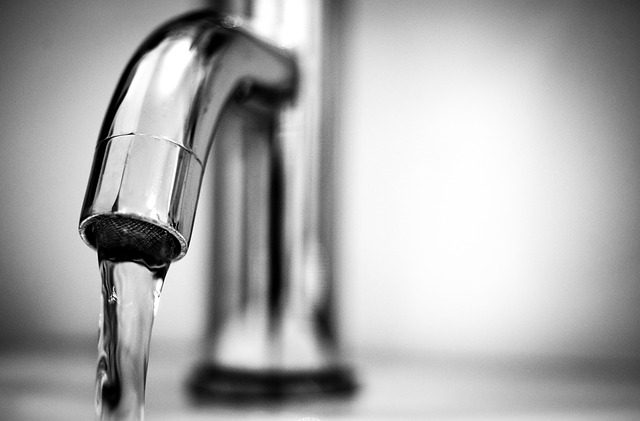Leaks in buildings
The term ‘leak’ refers to the accidentally loss or admission of something through a hole, crack, or some other permeability. It most commonly relates to liquids or gases, but might also refer to some solids that can behave in a fluid manner, such as sand.
In the construction industry, leaks might refer to:
- Penetrating damp, allowing moisture through roofs, walls, floors, windows and so on. This can cause decay to the building fabric, mould growth, mildew and so on. For more information see: Penetrating damp in buildings.
- Leaking pipework, such as water pipes, refrigeration pipes, gas or oil pipes, drainage pipework and so on. For more information see: Pipework defects, ventilation and airflow rates.
- Leaking ducts such as ventilation ducts.
- Leaking fixtures, fittings and equipment, such as taps, sinks, showers, washing machines and so on.
- Air infiltration through doors, windows and the fabric of the building, resulting in uncomfortable draughts and inefficiencies in heating, cooling and ventilation systems. The building regulations now require air permeability testing to prove that infiltration into new buildings is low. For more information see: Draughts in buildings and Air tightness in buildings.
- Failure of flood defences or drainage.
Leaks can result from:
- Poor workmanship, including poor repairs.
- Defective products or components, or failure of products or components (in particular problems with joints).
- Incorrect specification or design.
- Movement, such as settlement, thermal expansion and so on.
- Environmental influences such as wind, flood (and drainage problems), freezing and so on.
Because of the tendency for leaking materials to move, leaks can be difficult to detect, and their causes can be difficult to trace and rectify.
Leaks that go unrepaired can result in significant losses. A tap leaking just once every 6 seconds can discharge almost 100 litres in a month. In a review of water company performance published in 2019, it was reported that 3.17 billion litres of water leaks from the water distribution network every day in England and Wales (Ref https://wwtonline.co.uk/news/ccwater-criticises-three-companies-over-leakage).
Leaking water or mains gas can be very damaging and sometimes dangerous, whilst leaks of some refrigerants, oil and so on can be damaging to the environment.
When repairing leaks, it is important to identify the actual source of the leak, and to repair the problem that has caused it before repairing any of the subsequent damage that may have resulted from the leak.
NB Leakage can also refer to '...the leakage of benefits intended for a recipient group or area into another group or area.' Ref The Green Book, Central Government Guidance On Appraisal And Evaluation, Published by HM Treasury in 2018.
Note The 2020 Green Book suggests ‘Leakage is the extent to which effects “leak out” of a target area into others e.g. workers commuting into other areas to take up new employment opportunities.’
[edit] Related articles on Designing Buildings
- Air tightness in buildings.
- Approved document L.
- BREEAM Water leak detection.
- Damp in buildings.
- Draughts in buildings.
- Fit testing.
- How to waterproof a rooflight.
- Let us evolve our buildings from being passive structures to interactive and reactive systems.
- Penetrating damp in buildings.
- Pipework defects, ventilation and airflow rates.
- Refrigerants.
- Roofing repairs.
Featured articles and news
The restoration of the novelist’s birthplace in Eastwood.
Life Critical Fire Safety External Wall System LCFS EWS
Breaking down what is meant by this now often used term.
PAC report on the Remediation of Dangerous Cladding
Recommendations on workforce, transparency, support, insurance, funding, fraud and mismanagement.
New towns, expanded settlements and housing delivery
Modular inquiry asks if new towns and expanded settlements are an effective means of delivering housing.
Building Engineering Business Survey Q1 2025
Survey shows growth remains flat as skill shortages and volatile pricing persist.
Construction contract awards remain buoyant
Infrastructure up but residential struggles.
Home builders call for suspension of Building Safety Levy
HBF with over 100 home builders write to the Chancellor.
CIOB Apprentice of the Year 2024/2025
CIOB names James Monk a quantity surveyor from Cambridge as the winner.
Warm Homes Plan and existing energy bill support policies
Breaking down what existing policies are and what they do.
Treasury responds to sector submission on Warm Homes
Trade associations call on Government to make good on manifesto pledge for the upgrading of 5 million homes.
A tour through Robotic Installation Systems for Elevators, Innovation Labs, MetaCore and PORT tech.
A dynamic brand built for impact stitched into BSRIA’s building fabric.
BS 9991:2024 and the recently published CLC advisory note
Fire safety in the design, management and use of residential buildings. Code of practice.




















